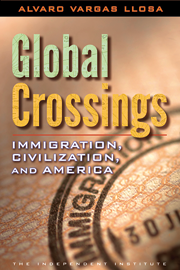One reason the nationalist/populist right has gained ground in the U.S. and Europe is the widespread misperception about immigration. Stemming the growth of nationalist populism will be monumentally difficult unless the debate centers on real facts. The longer this takes, the easier it will be for nationalist populism to thrive, because its success hinges on its ability to bamboozle a misinformed public.
The nationalist right is already participating in five governments in eastern Europe and Scandinavia; it has entered the German parliament for the first time since the 1930s; it has obtained 38 percent of the vote in France; it has become the second largest party in the Netherlands; and it has risen to power in Italy. And then there’s the Trump phenomenon in the U.S.
In none of these countries is the public perception of immigrants in sync with the truth.
A recent National Bureau of Economic Research study by Alberto Alesina, Armando Miano, and Stefanie Stantcheva presents a survey of 22,500 people from different social and political segments in the U.S., France, Germany, Italy, Sweden, and the U.K. And it asks them all a simple question: What share of your country’s population do immigrants make up?
Americans believe that legal immigrants constitute 36 percent of the total population. The real proportion is 10 percent. And American respondents have similarly exaggerated ideas about undocumented immigrants, who do not represent more than 3.5 percent of the population.
In France, respondents thought that documented immigrants constitute almost 30 percent of the population. The real number is 12 percent.
The gap between perception and reality in Germany is two to one.
Undocumented immigrants number so few in most of Europe—less than 0.5 percent of the population—that it is almost embarrassing that this issue has dominated most of the summer news across the Old World.
As I write this column in Spain, I am looking at hysterical headlines about African boat people trying to make it into Europe and about politicians taking tough stances against the human sea of invaders. But according to the International Organization for Migration, the number of immigrants/refugees coming into Europe has broadly declined since 2015, the year when, partly due to the wars of the Middle East in which western countries have taken part directly or indirectly, more than a million people of foreign origin swept across the continent and caused severe strains in relations among various countries of the European Union.
Germany in particular, adopted a generous and welcoming policy, while others reacted with fury against it. But so far this year, no more than 75,700 immigrants/refugees have come into Europe—less than 9,500 per month, that is, one-ninth of the number from three years ago. And last year the total number was one-fifth that of 2015.
People in Europe widely believe that immigrants have continued to pour in due to Chancellor Angela Merkel’s irresponsible policies. She has been walking a tightrope since a party in her coalition broke ranks with her on immigration a few months ago and threatened a collapse of her government.
Similar misperceptions recently led Italians to open the doors of government to the League Party and the 5-Star Movement. This coalition government has become the standard bearer of anti-immigration sentiment in Western Europe—so much so that Trump has profusely expressed his admiration. And yet, to name but one area in which there is a gulf between perception and reality, immigrants receive one-third the amount in benefits that the survey shows Italians think they obtain.
The trouble with misperceptions of the kind that plague the debate on immigration is that in all of these countries, influential (or aspiring) politicians and opinion leaders have a vested interest in reinforcing them. Their ideological construct feeds on, but also fuels, misperception in a vicious circle of lies. What makes the task of restoring the truth in this discussion particularly hard is that many people’s misperceptions are a projection of instinctive fears rather than the consequence of having been fed gross lies.
In other words, people believe what they want to believe.













